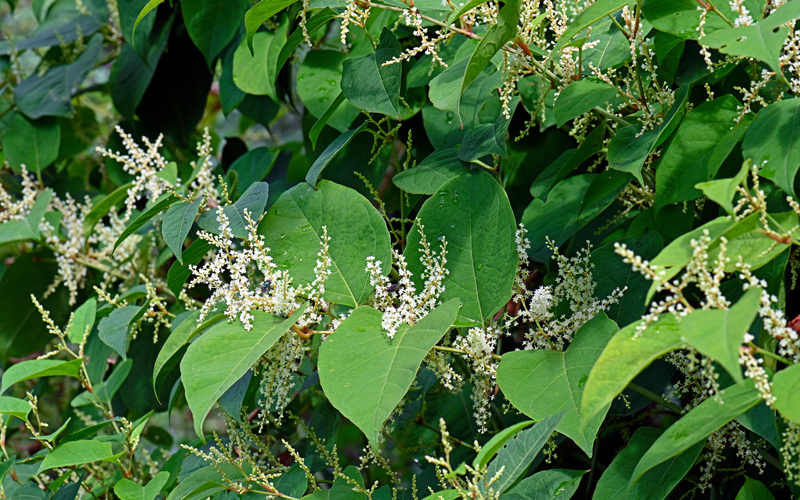
Exploiting exotic pathogens as mycoherbicides against Japanese knotweed
Non-native plants have the potential to cause adverse impacts on native ecosystems, business activities and greenspace management. Japanese knotweed, which poses a particular challenge in the UK, has traditionally been managed by mechanical or chemical control, but recent research has investigated the potential for using biological control as an alternative.
Biological control may be implemented either via classical/inoculative or inundative/augmentative.
The classical/inoculative method relies on the use of natural enemies of invasive weeds, which are host-specific and sourced from the native range of the non-native plant. Surveys for natural enemies of Japanese knotweed in Japan revealed 186 arthropods (insects) and 3 fungal pathogens. Since 2010, following approval by Defra, host-specific plant lice insects have been released for trial in the UK. Plant pathogens have also been trialled but with less success; screening trials revealed species used were found to be pathogenic to several non-target plant species and therefore unsuitable.
The inundative method relies on the application of high-inoculum doses of native plant pathogens called ‘mycoherbicides’. This method requires mass production of pathogens, which are applied in a similar way to traditional chemicals. Whilst trials have been successful, the cost of developing and introducing the product remains a barrier to further development for the commercial market. Furthermore, introduction of exotic plant pathogens most overcome public perception.
Further reading

